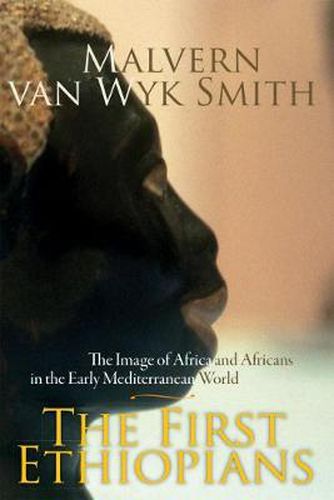Readings Newsletter
Become a Readings Member to make your shopping experience even easier.
Sign in or sign up for free!
You’re not far away from qualifying for FREE standard shipping within Australia
You’ve qualified for FREE standard shipping within Australia
The cart is loading…






This title is printed to order. This book may have been self-published. If so, we cannot guarantee the quality of the content. In the main most books will have gone through the editing process however some may not. We therefore suggest that you be aware of this before ordering this book. If in doubt check either the author or publisher’s details as we are unable to accept any returns unless they are faulty. Please contact us if you have any questions.
The First Ethiopians explores the images of Africa and Africans that evolved in ancient Egypt, in classical Greece and imperial Rome, in the early Mediterranean world, and in the early domains of Christianity. Inspired by curiosity regarding the origins of racism in southern Africa, Malvern van Wyk Smith consulted a wide range of sources: from rock art to classical travel writing; from the pre-dynastic African beginnings of Egyptian and Nubian civilisations to Greek and Roman perceptions of Africa; from Khoisan cultural expressions to early Christian conceptions of Africa and its people as ‘demonic’; from Aristotelian climatology to medieval cartography; and, from the geo-linguistic history of Africa to the most recent revelations regarding the genome profile of the continent’s peoples. The research led to a startling proposition: western racism has its roots in Africa itself, notably in late New-Kingdom Egypt as its ruling elites sought to distance Egyptian civilisation from its African origins. Kushite Nubians, founders of Napata and Meroe who, in the eighth century BC, furnished the Black rulers of the twenty-fifth Dynasty in Egypt, adopted and adapted such dynastic discriminations in order to differentiate their own ‘superior’ Meroitic civilisation from the world of ‘other Ethiopians’. In due course, Archaic Greeks, who began to arrive in the Nile Delta in the seventh century BC, internalised these distinctions in terms of Homer’s identification of ‘two Ethiopias’, an eastern and a western, to create a racialised (and racist) discourse of ‘worthy’ and ‘savage Ethiopians’. Such conceptions would inspire virtually all subsequent Roman and early medieval thinking about Africa and Africans, and become foundational in European thought. The book is richly illustrated and concludes with a survey of the special place that Aksumite Ethiopia - later Abyssinia - has held in both European and African conceptual worlds as the site of ‘worthy Ethiopia’, as well as in the wider context of discourses of ethnicity and race.
$9.00 standard shipping within Australia
FREE standard shipping within Australia for orders over $100.00
Express & International shipping calculated at checkout
This title is printed to order. This book may have been self-published. If so, we cannot guarantee the quality of the content. In the main most books will have gone through the editing process however some may not. We therefore suggest that you be aware of this before ordering this book. If in doubt check either the author or publisher’s details as we are unable to accept any returns unless they are faulty. Please contact us if you have any questions.
The First Ethiopians explores the images of Africa and Africans that evolved in ancient Egypt, in classical Greece and imperial Rome, in the early Mediterranean world, and in the early domains of Christianity. Inspired by curiosity regarding the origins of racism in southern Africa, Malvern van Wyk Smith consulted a wide range of sources: from rock art to classical travel writing; from the pre-dynastic African beginnings of Egyptian and Nubian civilisations to Greek and Roman perceptions of Africa; from Khoisan cultural expressions to early Christian conceptions of Africa and its people as ‘demonic’; from Aristotelian climatology to medieval cartography; and, from the geo-linguistic history of Africa to the most recent revelations regarding the genome profile of the continent’s peoples. The research led to a startling proposition: western racism has its roots in Africa itself, notably in late New-Kingdom Egypt as its ruling elites sought to distance Egyptian civilisation from its African origins. Kushite Nubians, founders of Napata and Meroe who, in the eighth century BC, furnished the Black rulers of the twenty-fifth Dynasty in Egypt, adopted and adapted such dynastic discriminations in order to differentiate their own ‘superior’ Meroitic civilisation from the world of ‘other Ethiopians’. In due course, Archaic Greeks, who began to arrive in the Nile Delta in the seventh century BC, internalised these distinctions in terms of Homer’s identification of ‘two Ethiopias’, an eastern and a western, to create a racialised (and racist) discourse of ‘worthy’ and ‘savage Ethiopians’. Such conceptions would inspire virtually all subsequent Roman and early medieval thinking about Africa and Africans, and become foundational in European thought. The book is richly illustrated and concludes with a survey of the special place that Aksumite Ethiopia - later Abyssinia - has held in both European and African conceptual worlds as the site of ‘worthy Ethiopia’, as well as in the wider context of discourses of ethnicity and race.